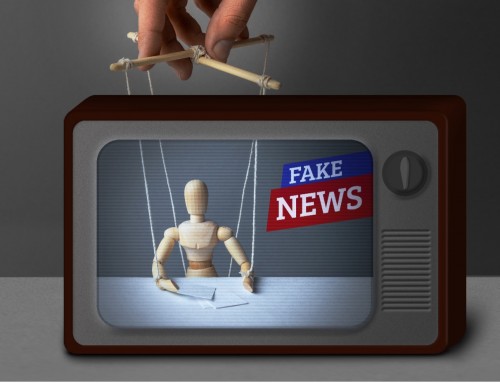The customer is king and the future orientation of the company to the wishes and needs of the customers is still considered a guarantee for a successful company today. But unfortunately, theory and practice are usually miles apart. This article shows you how you can easily implement a complaint management system and sensitize your employees to the needs of customers.
1. The multiple goals of complaint management
The term complaint management covers all the measures that an entrepreneur takes when his customer expresses dissatisfaction. The aim is not only to restore the customer’s satisfaction, but rather to stabilize the endangered customer relationship, to ensure quality and to prevent future complaints. Complaint management also encompasses the planning, implementation and monitoring of these measures.
The implementation of a complaint management system is intended to minimize the churn of dissatisfied customers, thereby increasing the competitiveness of your company. In addition, the complaint should not only be understood as criticism, but the information it contains should be used to uncover operational weaknesses and eliminate them. By dealing positively with customer complaints, your company can therefore create a particularly customer-oriented corporate image on the market and thus strengthen its market opportunities.
2. complaint management and its different tasks
Complaint management can be divided into the direct and the indirect complaint management process:
- While the direct complaint management process is closely linked to your customer’s complaint experience and includes complaint stimulation, complaint acceptance, complaint handling and complaint reaction,
- the indirect complaint management process is handled without customer contact. This primarily includes complaint evaluation, complaint management controlling, complaint optimization and complaint information utilization.
The following section focuses on the direct complaint management process.
2.1 A rating system for greater customer satisfaction
2.1.1 Complaint stimulation for better customer loyalty
Only a few dissatisfied customers complain to you and thus indirectly show that they like being a customer of your company and would like to help you optimize products and processes. The majority of your customers who do not make their dissatisfaction known will in all likelihood migrate to the competition. The reason for this is anger about the defective product or the unsatisfactory performance of your company. To prevent dissatisfied customers from leaving, it is very important to encourage them to voice their opinions as part of the complaint stimulation process.
2.1.2 Stimulating complaints through an improved service mindset
There are numerous ways to encourage your customer to lodge a complaint. It is important that the customer is informed about the options for lodging a complaint. Examples:
Set up a special subpage on your company’s homepage titled “Customer Satisfaction,” “Customer Service” or “Complaint Management.”
Point out the options for giving feedback in a letter when your products are sent out.
Send a brief customer satisfaction email after the order is completed.
With the help of a simple and clear online form on your homepage, in which the customer leaves his contact details and a message, you can respond quickly to complaints and restore customer satisfaction. Here, an automatic response email can be set up to confirm to your customer that their complaint has been received and that it will be dealt with quickly.
For medium-sized or large companies, free service numbers are also successful, with the help of which the customer is connected to an employee of the company, who receives the customer complaint and deals with it as quickly as possible. The service employee can work out a possible solution directly in discussion with the customer and take immediate remedial action.
In practice, the follow-up of an order process with the help of a friendly e-mail requesting a short evaluation of your product or service in a simple evaluation system has proven to be particularly effective. Especially a few days after the order has been processed, you can ask your customer’s opinion by sending an e-mail with a link to the complaint tool and thus get direct customer feedback. Here, you should make sure that the form is clear and contains short questions about the product, the service and the customer service. The e-mail to your customer could look like this:
Sample: Follow-up of an order by e-mail:
“Dear Mr./Madam …
a few days ago you received your new product. Only you can judge whether you are satisfied with it and our service. In order to continuously improve our services, we would appreciate your feedback. Below you will find a link to our customer satisfaction tool. Take a few minutes and let us know what you think. Don’t be sparing with criticism, because only through your open and honest feedback we can continuously improve and meet your expectations.
Thank you very much for your support.
Yours sincerely”
2.2 Friendliness and understanding create satisfaction
2.2.1 The crucial role of complaint acceptance
In the complaint acceptance phase, the organization and handling of the customer complaint play a crucial role. The very first reaction of your employees to the complaint determines whether your customer’s anger can be appeased quickly.
Practical tip: Ensure that your employees are informed about the complaint channels and processing standards in your company. In addition, you should train your employees regularly so that they know exactly what to look out for when dealing with dissatisfied customers and how best to respond to angry customers.
With an angry customer, the most important thing is to remain calm and show understanding for their anger. In addition, it is of great importance to signal to the customer that he is taken seriously and that your company is grateful for his complaint, because only in this way is there a chance for further development. In addition, the customer should be shown that a quick and complete solution is being worked on. A polite and sincere apology and a small gift have proven many times in practice to restore the customer’s satisfaction.
2.2.2 Complaint handling checklist
A checklist can help your employees calm down upset customers, receive the complaint carefully and develop a solution together with your customer. Final complaint resolution and follow-up should also not be neglected when handling a complaint. Below is a possible checklist:
Checklist: Complaint Handling
- Complaint acceptance: Accept the complaint and acknowledge its receipt. Show understanding for your customer’s anger and assure them that you will process the complaint quickly.
- Clarifying the cause: Clarify the internal cause of the customer complaint as quickly as possible. This can be done by asking colleagues, if necessary, but do not make the customer wait longer than absolutely necessary.
- Proposed solution: Offer your customer a possible solution and show yourself to be accommodating and generous.
- Complaint resolution: If the customer agrees with your proposed solution, resolve the complaint promptly.
- Complaint follow-up: Make a follow-up call to make sure your customer is satisfied with the complaint resolution.
2.3 Rapid processing ensures greater satisfaction
When dealing with complaints, the design of the internal handling process as well as the definition of deadlines and the monitoring of adherence to deadlines play a key role.
Take customer complaints seriously and do everything you can to resolve the customer’s dissatisfaction as quickly as possible. Above all, this includes clear deadlines.
The responsibilities of your employees to each other should also be clearly defined in order to prevent hasty decisions or long waiting times for the customer. Appropriate plans and procedures can be discussed in a team meeting and illustrated with handouts. These are available to every employee during complaint processing and ensure rapid processing for a quick restoration of customer satisfaction.
2.4 Small gifts preserve friendship
In the event of a customer complaint, it is important to develop and adhere to basic guidelines and rules of conduct in the area of complaint handling.
Practical tip: Determine exactly which solutions can be offered to your customer regarding his complaint and develop a kind of complaint guide. This should be handed out to your employees so that they can use it as a guide when they receive a customer complaint.
Financial compensation such as price reductions or damages, tangible offers such as exchange or repair, or intangible offers of compensation such as a sincere apology can in practice be tried and tested means of quickly restoring customer satisfaction.
All information and details in our articles and information have been compiled to the best of our knowledge. However, they are provided without liability. This information cannot replace individual advice in specific cases.
Link to the german version: https://thevisionworks.de/beschwerdemanagement





